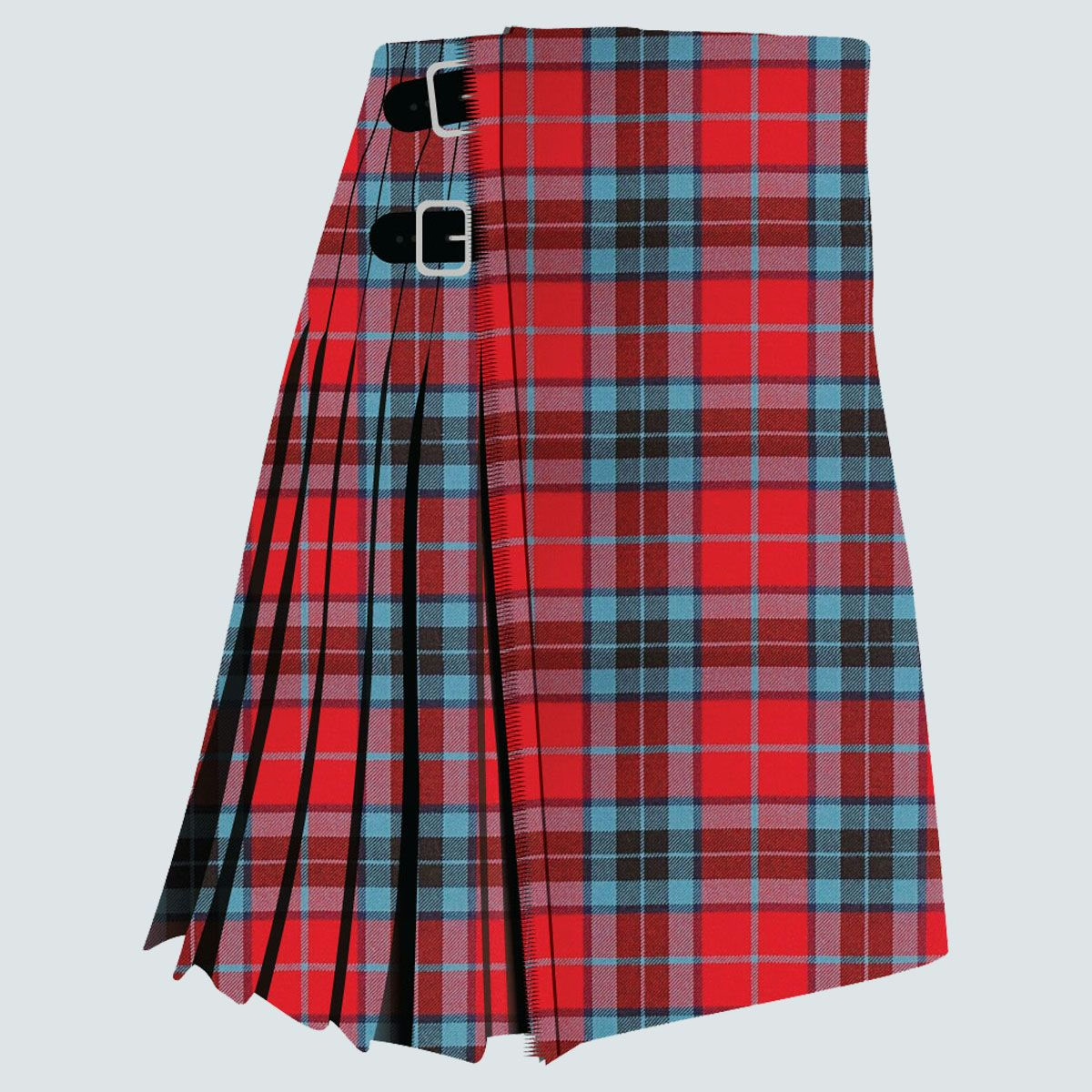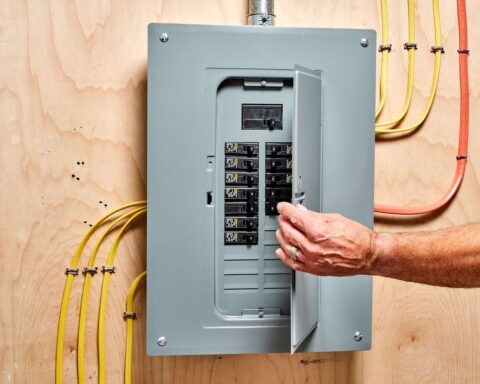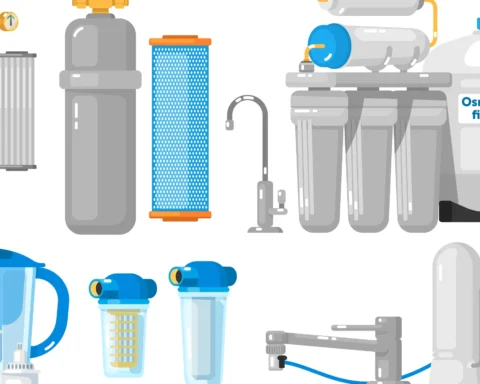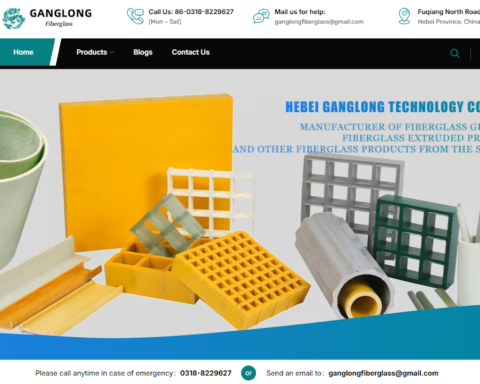Heavy duty conveyor rollers are specifically designed to handle the rigorous demands of heavy industry, providing robust support for transporting large and heavy materials. Unlike standard conveyor rollers, which are typically used for lighter, less demanding applications, heavy duty rollers are constructed from durable materials such as steel and reinforced nylon. These rollers are engineered to withstand higher load capacities, greater stress, and more challenging environmental conditions. Their significance lies in their ability to maintain efficiency and reliability in tough industrial settings, such as mining, construction, and manufacturing. By comparing heavy duty rollers to standard ones, it becomes clear that the former are essential for applications requiring enhanced durability, strength, and longevity.
Types of Heavy Duty Conveyor Rollers
Materials Used
Steel:
Steel is a primary material used in heavy duty conveyor rollers due to its exceptional strength and durability. Steel rollers can handle extremely high loads and are resistant to impact and abrasion, making them ideal for harsh industrial environments. They are often coated with protective finishes to prevent rust and corrosion, ensuring longevity even in wet or corrosive conditions. Steel rollers are common in mining, construction, and other heavy industries where robust performance is critical.
Nylon:
Nylon conveyor rollers offer a balance of strength and lightweight properties, making them suitable for heavy duty applications that still require some flexibility and reduced overall system weight. Nylon is highly resistant to wear, chemical exposure, and extreme temperatures, providing a low-maintenance option. These rollers are also quieter in operation compared to steel, making them advantageous in settings where noise reduction is important. They are commonly used in manufacturing and assembly lines where both durability and operational efficiency are needed.
Design Variations
Straight Rollers:
Straight rollers are the most common design, used to transport items in a linear path. They are versatile and can be used in a variety of applications, from simple material handling to complex conveyor systems. Their straightforward design allows for easy installation and maintenance.
Tapered Rollers:
Tapered rollers are designed for use in curved conveyor systems. The tapered shape allows items to maintain their orientation as they move along the curve, ensuring smooth and consistent transport. These rollers are essential in applications where space constraints require the conveyor to navigate bends and turns without losing efficiency.
Flanged Rollers:
Flanged rollers have edges or flanges that help guide items and prevent them from falling off the conveyor. This design is particularly useful in applications where items need to be kept within a defined path or where there is a risk of side-to-side movement. Flanged rollers are often used in heavy-duty applications where precise handling of materials is required.
Role of Brackets and Bearing Types
Brackets:
Brackets play a crucial role in the installation and stability of heavy duty conveyor rollers. They secure the rollers to the conveyor frame and ensure proper alignment. Depending on the application, brackets can be adjustable to accommodate different roller sizes and configurations, or fixed for stability. Proper bracket selection and installation are vital for the efficient operation of the conveyor system, as they support the rollers and help maintain smooth movement of materials.
Bearing Types:
Bearings are essential components in heavy duty conveyor rollers, as they facilitate smooth rotation and reduce friction. Common bearing types used in these rollers include:
Ball Bearings: Known for their efficiency and durability, ball bearings are suitable for high-speed applications and can handle both radial and axial loads. They are widely used in heavy duty rollers for their reliability and low maintenance needs.
Roller Bearings: These bearings can support higher loads than ball bearings due to their larger contact area. They are ideal for applications where heavy loads need to be moved with minimal friction.
Sealed Bearings: Sealed bearings are protected from contaminants such as dust and moisture, making them suitable for harsh environments. The sealing extends the lifespan of the bearings by keeping lubrication in and contaminants out.
Selecting the appropriate bearing type is crucial for ensuring the longevity and efficiency of heavy duty conveyor rollers. Properly maintained bearings contribute to the smooth operation and reduced downtime of conveyor systems, making them a key factor in overall system performance.
By understanding the different materials, design variations, and the roles of brackets and bearings, one can appreciate the versatility and robustness of heavy duty conveyor rollers, and how they can be tailored to meet specific industrial needs.
Key Specifications
Dimensions
Focus on 4″ Conveyor Rollers:
One of the most common dimensions for heavy duty conveyor rollers is the 4-inch diameter. This size strikes a balance between strength and versatility, making it suitable for a wide range of applications. The length of 4″ rollers can vary significantly depending on the specific requirements of the conveyor system, typically ranging from a few inches to several feet. The shaft diameter and wall thickness are also critical dimensions, as they affect the roller’s load capacity and overall durability. Standard shaft diameters for 4″ rollers can range from 0.75 inches to 1.5 inches, with thicker walls providing greater strength and resistance to bending or deformation under heavy loads.
Load Capacities and Stress Limits
Load Capacities:
Heavy duty conveyor rollers are designed to handle substantial weights, with load capacities varying based on the material and construction of the roller. For a standard 4″ steel roller, load capacities can range from several hundred pounds to over a thousand pounds per roller. Nylon rollers, while typically lighter, can still support significant weights, often ranging from several hundred pounds to around a thousand pounds, depending on the specific grade of nylon used and the design of the roller.
Stress Limits:
The stress limits of heavy duty conveyor rollers are determined by their material properties and construction quality. Steel rollers generally have higher stress limits due to the material’s inherent strength and rigidity. They can withstand high impact forces and continuous heavy loading without deforming. Nylon rollers, while not as strong as steel in terms of stress limits, offer excellent resilience and can absorb shocks and impacts better, reducing the risk of damage under sudden load changes. Both types of rollers are engineered to operate within their specified load and stress limits, ensuring reliable performance and longevity.
Environmental and Operational Considerations
Environmental Considerations:
Heavy duty conveyor rollers are often used in harsh and demanding environments, so they must be designed to withstand various environmental factors. Steel rollers need protective coatings, such as galvanization or powder coating, to resist rust and corrosion in wet or corrosive environments. Nylon rollers are naturally resistant to corrosion and can operate effectively in moist or chemically aggressive conditions. Additionally, both types of rollers must be able to perform reliably in extreme temperatures, whether hot or cold, without compromising their structural integrity.
Operational Considerations:
Operational considerations for heavy duty conveyor rollers include factors such as speed, frequency of use, and the nature of the materials being transported. High-speed applications require rollers with precise engineering to minimize vibrations and ensure smooth operation. Frequent use necessitates robust construction and high-quality bearings to maintain performance over time. The type of materials being transported—whether abrasive, sharp, or heavy—also impacts the choice of roller. Steel rollers are ideal for handling abrasive and heavy materials due to their toughness, while nylon rollers are preferred for transporting items that require a softer handling surface to prevent damage.
Maintenance Requirements:
Regular maintenance is crucial for the optimal performance of heavy duty conveyor rollers. This includes routine inspections to check for signs of wear, proper lubrication of bearings, and timely replacement of damaged or worn-out components. Maintenance schedules should be based on the intensity of use and the environmental conditions in which the rollers operate. Preventive maintenance helps to extend the lifespan of the rollers and prevent unexpected breakdowns, ensuring continuous and efficient operation of the conveyor system.
By understanding these key specifications—dimensions, load capacities and stress limits, and environmental and operational considerations—industries can select the appropriate heavy duty conveyor rollers to meet their specific needs, ensuring reliable and efficient material handling operations.
Applications and Use Cases
Heavy Industry Applications
Mining:
In the mining industry, heavy duty conveyor rollers are indispensable for transporting extracted minerals and ores from the mining site to processing facilities. These rollers must endure harsh conditions, including exposure to abrasive materials, heavy loads, and extreme environmental factors. Steel rollers are particularly well-suited for mining applications due to their strength and resistance to wear and tear. Conveyor systems in mining operations often span long distances and require robust rollers that can handle the constant movement of large volumes of materials without frequent maintenance.
Construction:
The construction industry relies on heavy duty conveyor rollers for the efficient movement of construction materials such as sand, gravel, concrete, and asphalt. These rollers facilitate the transport of materials on construction sites, reducing the need for manual labor and enhancing productivity. Durable and resilient, steel and nylon rollers can withstand the impact and heavy loads typical in construction environments. Conveyor systems equipped with heavy duty rollers help streamline the workflow, ensuring that materials are delivered to the right locations quickly and efficiently.
Manufacturing and Assembly Lines
Manufacturing:
In manufacturing, conveyor systems with heavy duty rollers are crucial for moving raw materials, components, and finished products through various stages of production. These rollers support high-speed operations and can handle significant loads, making them ideal for assembly lines where reliability and efficiency are paramount. Nylon rollers, known for their smooth operation and low maintenance requirements, are often used in manufacturing to transport delicate items without causing damage. Steel rollers, on the other hand, are preferred for handling heavy components and assemblies.
Assembly Lines:
Assembly lines benefit from the precision and durability of heavy duty conveyor rollers. These rollers ensure that products move steadily along the production line, allowing workers to perform their tasks without interruption. The use of flanged and tapered rollers can help guide items and maintain their orientation, which is essential for maintaining the integrity of the assembly process. By incorporating heavy duty rollers, manufacturers can achieve higher throughput, reduce downtime, and maintain consistent product quality.
Transport and Logistics
Transport:
In the transport sector, conveyor systems with heavy duty rollers are used to load and unload goods from trucks, ships, and trains. These rollers must be capable of handling a wide range of items, from bulky cargo to delicate packages. Steel rollers are often used in transport applications due to their ability to support heavy loads and resist damage from impact. Conveyor systems equipped with heavy duty rollers enable faster and more efficient loading and unloading processes, reducing turnaround times and increasing overall operational efficiency.
Logistics:
Logistics operations, including warehousing and distribution centers, rely heavily on conveyor systems to move goods through storage and sorting areas. Heavy duty rollers are essential for handling the high volumes of packages and pallets that pass through these facilities daily. Nylon rollers are commonly used in logistics for their smooth and quiet operation, which helps maintain a conducive working environment. Additionally, rollers with integrated brackets and bearings facilitate quick installation and adjustments, allowing logistics operations to adapt to changing demands and streamline their workflows.
Custom Solutions:
Heavy duty conveyor rollers can be customized to meet the specific needs of various transport and logistics applications. For example, rollers can be coated with specialized materials to improve grip and reduce the risk of slippage. In automated warehouses, conveyor systems with heavy duty rollers can be integrated with robotic systems to enhance sorting and retrieval processes. By leveraging the versatility and strength of heavy duty rollers, transport and logistics companies can optimize their operations and provide faster, more reliable services to their customers.
By understanding the diverse applications and use cases of heavy duty conveyor rollers in heavy industry, manufacturing, and transport and logistics, businesses can select the right rollers to enhance their operational efficiency, reduce downtime, and improve overall productivity. Whether handling raw materials in mining, assembling products on manufacturing lines, or moving goods in logistics centers, heavy duty rollers provide the reliability and durability needed to keep operations running smoothly.
Installation and Maintenance Best Practices
Proper Installation Techniques for Heavy Duty Rollers
Preparation:
Before beginning the installation of heavy duty conveyor rollers, it’s crucial to thoroughly prepare the workspace and ensure all necessary tools and components are available. This includes verifying the specifications of the rollers, brackets, and bearings to ensure compatibility with the conveyor system.
Alignment and Positioning:
Proper alignment and positioning of the rollers are essential to ensure smooth operation and prevent undue wear and tear. Begin by marking the exact positions where each roller will be installed. Use a level and measuring tape to ensure the marks are straight and evenly spaced. Misaligned rollers can cause uneven loading and increased friction, leading to premature failure.
Mounting Brackets:
Securely attach the mounting brackets to the conveyor frame. Ensure that the brackets are firmly fixed and aligned correctly with the designated roller positions. Adjustable brackets can be beneficial, allowing for fine-tuning of roller placement during and after installation.
Installing Rollers:
Carefully place each roller into the brackets, ensuring that they fit snugly and can rotate freely. For powered conveyors, connect the drive rollers to the motor system as specified by the manufacturer. Ensure that the drive roller is aligned properly to maintain consistent belt tension and prevent slippage.
Bearing Installation:
If the rollers require separate bearing installation, ensure that the bearings are properly seated and lubricated. Use the correct type of bearings as specified for the application to handle the expected loads and speeds. Secure the bearings to the roller shafts and brackets to prevent movement and ensure smooth rotation.
Final Checks:
Once all rollers are installed, perform a final inspection to verify that all components are securely attached and aligned. Manually rotate the rollers to check for smooth operation and correct any misalignments. For powered systems, conduct a test run to ensure that the motor and drive mechanisms are functioning correctly and that the conveyor belt moves smoothly.
Regular Maintenance and Troubleshooting Tips
Regular Inspections:
Routine inspections are crucial to maintaining the performance and longevity of heavy duty conveyor rollers. Conduct visual checks for signs of wear, such as cracks, dents, or deformation on the rollers. Inspect the bearings for smooth operation and check for any unusual noises that could indicate wear or damage.
Lubrication:
Proper lubrication of bearings and moving parts is essential to reduce friction and prevent wear. Follow the manufacturer’s guidelines for the type and frequency of lubrication required. Over-lubrication can attract dust and debris, while under-lubrication can lead to increased friction and wear.
Cleaning:
Keep the conveyor system and rollers clean to prevent the buildup of dirt, debris, and other contaminants that can affect performance. Use appropriate cleaning methods and materials to avoid damaging the rollers and bearings. Regular cleaning helps maintain smooth operation and extends the life of the components.
Adjustments:
Periodically check and adjust the alignment of the rollers to ensure they remain properly positioned. Misaligned rollers can cause uneven wear and reduce the efficiency of the conveyor system. Use the adjustable brackets, if available, to make necessary corrections.
Bearing Replacement:
Bearings are critical components that may wear out over time and require replacement. Monitor the condition of the bearings during regular inspections and replace them if they show signs of wear, such as increased noise, vibration, or resistance to rotation. Using high-quality bearings and replacing them promptly helps maintain the overall performance of the conveyor system.
Troubleshooting Common Issues:
Belt Slippage: Check for proper tension and alignment of the drive roller and conveyor belt. Adjust the tension and realign as needed.
Uneven Wear: Inspect the alignment of the rollers and ensure they are level. Check for any obstructions or misaligned components that could cause uneven loading.
Noise and Vibration: Examine the bearings and rollers for signs of wear or damage. Lubricate or replace components as necessary. Ensure the conveyor frame is stable and secure.
Preventive Maintenance Schedule:
Establish a preventive maintenance schedule based on the operational demands and environmental conditions of the conveyor system. Regularly scheduled maintenance activities, such as inspections, lubrication, and cleaning, help prevent unexpected breakdowns and extend the lifespan of the conveyor rollers.
By following these installation and maintenance best practices, you can ensure that your heavy duty conveyor rollers operate efficiently and reliably, minimizing downtime and maximizing the productivity of your conveyor system. Proper care and attention to detail in both installation and ongoing maintenance are key to achieving optimal performance and longevity.
Keep an eye for more news & updates on Essential Tribune!








